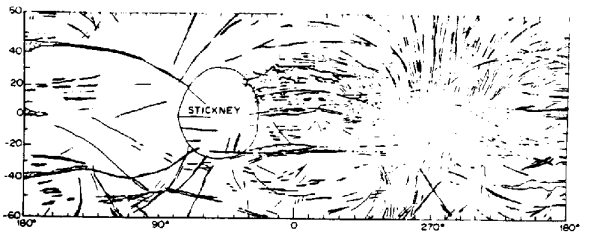What caused the grooves on phobos?
Photographs from the Viking Orbiters show that the Martian satellite Phobos displays a heavily grooved surface. Enough high-resolution photos have been taken to prove that these grooves emanate from the large crater named Stickney and run around the satellite to its opposite side where they die out. This suggests that the origin of the crater and the grooves are related. Further, the widest and deepest grooves (700 meters wide and 90 meters deep) are located close to Stickney. On the other side of Phobos, grooves are consistently less than 100 meters wide. Despite these hints of impact origin, the grooves are not quite what one would expect from simple fracture by collision. Some show beaded or pitted structures. Other grooves are composed of irregularly bounded segments. Finally, some of the straight-walled sections seem to have slightly raised rims. Evidently, some internal forces, perhaps stimulated by the formation of Stickney, also played a part.
(Thomas, P., et al; "Origin of the Grooves on Phobos," Nature, 273:282, 1978.)
Reference. The grooves of Phobos and its other anomalies are catalogued at ALL2 and ALL3 in The Moon and the Planets. To order this book, go to: here.

